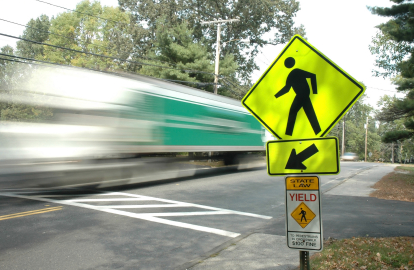<p style="text-align: justify;">Recovery from a serious injury can be a harrowing experience. A pedestrian-vehicle accident can lead to astronomical medical bills, a painful rehabilitation process, and permanent disabilities that can make it difficult to work. With this in mind, this article briefly explains the process of recovering from the person responsible for the pedestrian&#8217;s injuries.</p>
<h3 style="text-align: justify;"><strong>First and Foremost, Hire an Attorney</strong></h3>
<p style="text-align: justify;">A personal injury attorney will usually not cost a dime unless and until he secures a settlement or a victory at trial. The majority of personal injury cases are handled on a contingent-fee basis, which means the lawyer gets paid by taking a portion of the client&#8217;s award. Most personal injury attorneys will even front the costs of pursuing a case. Unless a person has in-depth legal knowledge, there is really no reason not to hire an attorney. Your attorney will know the ins and outs of the legal system and will be able to maximize your chances of recovery. For your own edification, however, the remainder of this article will summarize two issues that are commonly at the forefront of a personal injury case: liability and damages.</p>
<p style="text-align: justify;"><img class="aligncenter size-full wp-image-13764" src="https://medusamagazine.com/wp-content/uploads/2015/04/Pedestrians-What-to-do-if-you-Have-Been-Involved-in-an-Accident.png" alt="Pedestrians: What To Do If You Have Been Involved In An Accident" width="414" height="270" /></p>
<h3 style="text-align: justify;"><strong>Liability</strong></h3>
<p style="text-align: justify;">Injuries, including those caused by negligent behavior, are an unfortunate fact of life. On top of the obvious pain and discomfort they can bring to the victim, they can also be expensive. In our system of government, we have decided that the best person to handle these expenses is the person responsible for the accident.</p>
<p style="text-align: justify;">Liability, therefore, is essentially synonymous with fault. A person is liable if they negligently contribute to an injury. A jury will find that a person acted negligently if they failed to act with reasonable care. Though this standard is a bit nebulous, it is often fairly obvious when conduct is negligent. Blowing through a stoplight, driving drunk, or speeding through a pedestrian in a crosswalk are all good examples of negligent behavior. An injured person would have an easy time establishing liability in these cases. In order to recover, however, a person must also show that they have suffered damages.</p>
<h3 style="text-align: justify;"><strong>Damages</strong></h3>
<p style="text-align: justify;">Damages, in the legal context, are the costs associated with an injury. If a person gets seriously injured in an accident, their &#8220;hard&#8221; damages will typically include medical bills and lost wages. &#8220;Soft&#8221; damages, on the other hand, refers to money that the jury determines will compensate a person for the pain and suffering associated with an injury. Therefore, an injured person can recover their medical costs, the money they lose from having to miss work, and even compensation for the pain they have suffered.</p>
<h3 style="text-align: justify;"><strong>Conclusion</strong></h3>
<p style="text-align: justify;">If you take one thing from this article, let it be this: hire an attorney. An attorney for crosswalk injury can explain the above in far more detail, and they can also maximize your chances of recovery. Go consult with one as soon as possible.</p>

Pedestrians: What To Do If You Have Been Involved In An Accident
